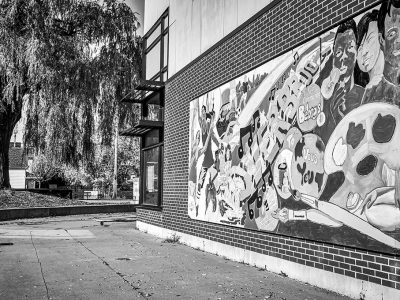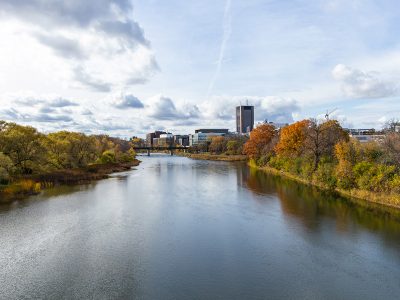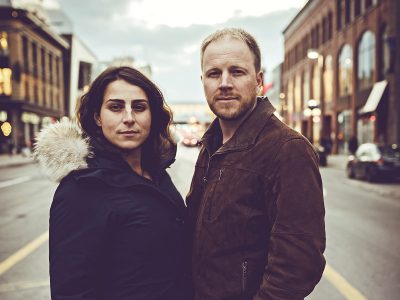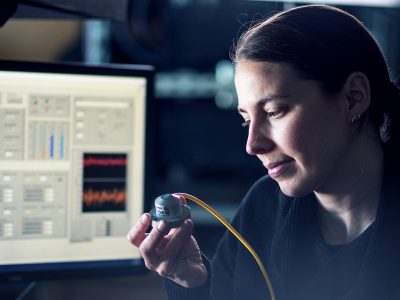By Tyrone Burke
Photos by Fangliang Xu
Last spring, when work at universities around the world was put on pause, researchers from every field imaginable asked an important question: What can we do to help?
At Carleton, the Office of the Vice-President (Research and International) sprang into action. In collaboration with the university’s five faculties, it launched the $800,000 CU COVID-19 Rapid Response Research Grants program to solicit proposals and swiftly support projects that address the pandemic.
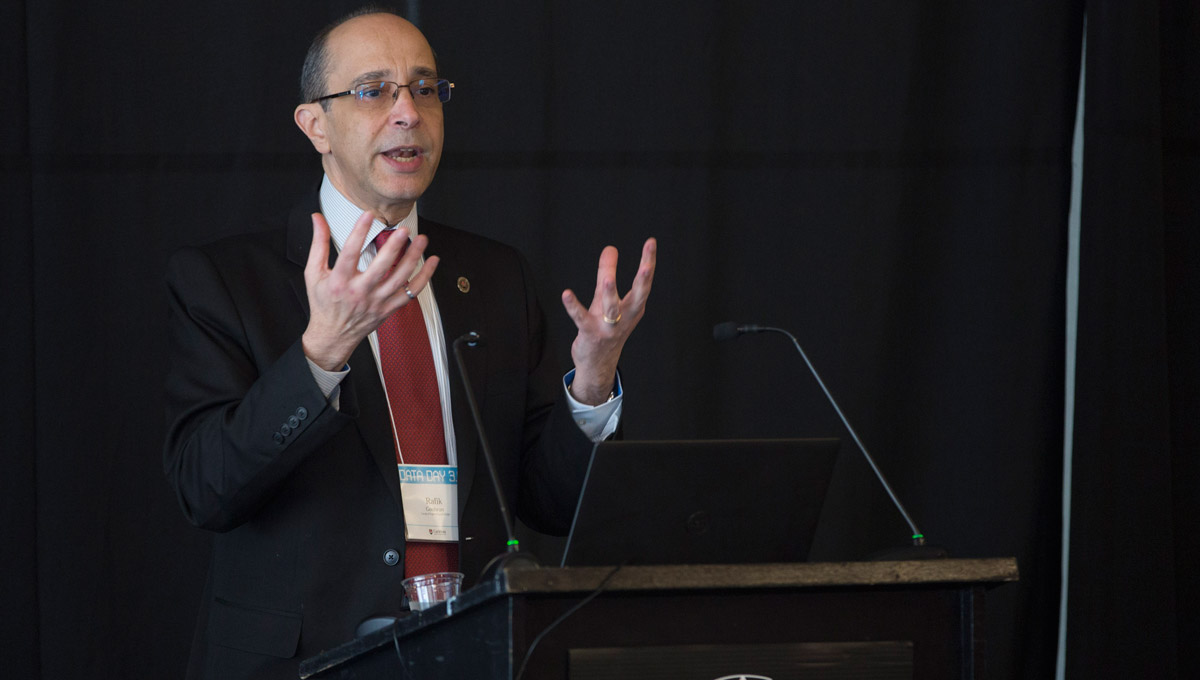
Vice-President (Research and International) Rafik Goubran
Within weeks, 59 professors were awarded up to $25,000 to conduct timely research in areas such as e-health, autonomous systems, data science, machine learning, eldercare, epidemiology and more.
“When a crisis touches every aspect of our lives, researchers from all academic backgrounds have a valuable contribution to make,” said Rafik Goubran, Carleton’s Vice-President (Research and International).
“The COVID-19 pandemic is multifaceted, and our response to it must be equally so.”
From engineering and architecture to food security, here’s a small sampling of stories about how Carleton faculty are gearing up to help.
Dr. Robot
Practising medicine wasn’t meant to be an occupational hazard, but hundreds of thousands of health-care workers have already been infected by COVID-19 globally, and the pandemic is far from over. Mechanical and Aerospace Engineering professor Mojtaba Ahmadi wants to help these workers stay safe by developing a robot that lets doctors assess people remotely, so they can maintain distance while treating COVID-19 patients.
“It’s an intelligent telepresence device that allows remote presence, but it’s also able to assist with certain tasks,” says Ahmadi.
The device enables live video communication between a patient and a doctor in another room. It is equipped to take a patient’s vital signs, including heart rate and blood-oxygen saturation levels, which can be an indicator of declining health.
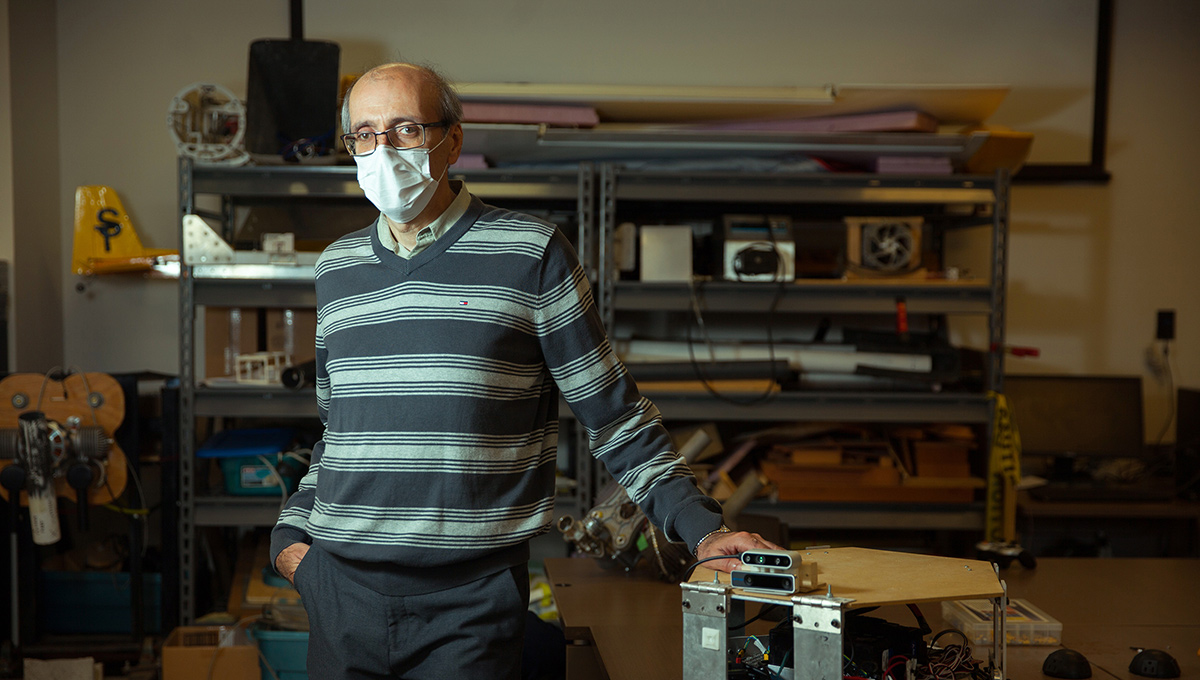
Prof. Mojtaba Ahmadi
The unit is remote controlled and omnidirectional, so it can navigate cluttered hospital environments. Initially, this work started as part of an undergraduate capstone project led by Ahmadi, rooted in his research on medical robotics, but the pandemic created additional urgency, so it has become the main focus for three grad students.
“We should have a physical robot before the end of the year,” he says, “and we’re hoping to do some tests in the hallways at Carleton and see how it works. We want to get feedback on the user interface, because that’s how it’s controlled. After that, we hope to make a clinical version of the robotic system that can be used in a hospital and help keep health-care workers safe.”
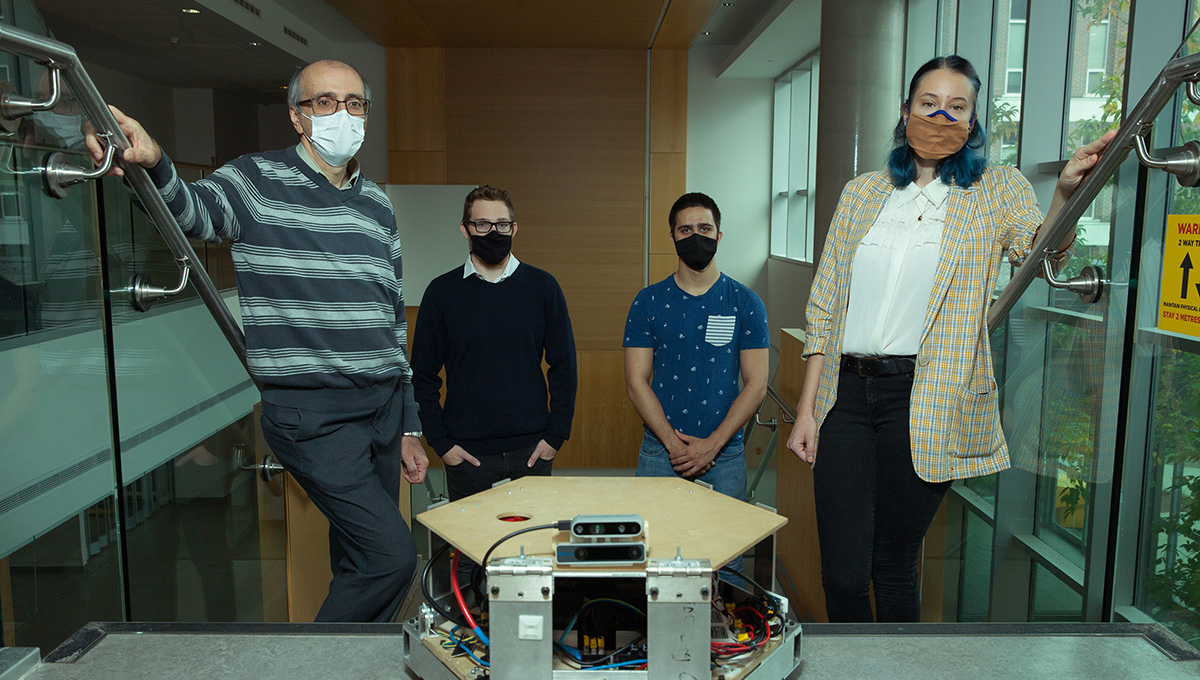
Safe Shopping
Sleek minimalist lines and well-ventilated airy spaces are a hallmark of modern architecture, but modern buildings don’t only look clean — they have provided sanitary living conditions on an unprecedented scale.
“There is a way to read modern architecture as a reaction to the Spanish Flu pandemic of 1918 and multiple tuberculosis outbreaks around the same time,” says architecture professor Zach Colbert.
“Open spaces, window walls, mechanical ventilation and building codes are all partly responses to public health concerns. Now that there is another major health crisis, I’m really curious about how architecture and urban design will respond.”

Prof. Zach Colbert
Colbert received a grant to explore how architectural interventions can help businesses adapt to COVID-19. Some changes are relatively easy to implement, such as touch-free doorknob alternatives and using antimicrobial materials. Others involve more substantive changes, including novel ventilation strategies and making greater use of outdoor spaces.
Some industries are better suited to adaptation than others. Restaurants have struggled, but for cities themselves, there might be a silver lining. As streets incorporate more patios, they become more lively and walkable.
“We needed pedestrian streets long before the pandemic,” says Colbert.
“They promote a healthy urban lifestyle. For architects, there is a real opportunity to take a leadership role and consider how public life can still be excellent, even when a two-metre radius is maintained.”
Autistic Adaptation
More and more autistic students are enrolling at universities worldwide, but many experience challenges with traditional classroom-based courses that were developed to meet the needs of the non-autistic majority. The pandemic has forced the rapid adoption of new learning platforms and online tools, and this provides an opportunity to assess whether some of these tools could work better for autistic students than traditional teaching methods.

Prof. Natasha Artemeva
Professor Natasha Artemeva from Carleton’s School of Linguistics and Language Studies is studying how autistic students have adapted to the changes caused by COVID-19 and, with speech pathologist and PhD candidate Jacquie Ballantine, is conducting interviews with autistic students, non-autistic students and instructors.
“Autistic students are usually asked to produce work and communicate according to a non-autistic way of being,” says Artemeva, who wants to use this unique moment to identify which adaptive course delivery strategies autistic students prefer, with the aim of understanding what steps can be taken to improve the retention of autistic students in the future.
“There are some autistic students who find large lecture halls and crowded campus spaces exhausting,” says Ballantine, “and they’re telling us that the changes caused by COVID have removed some of the anxiety and stress of being surrounded by so many people.”
Healthy Hospitals
Hospitals have put strict cleaning protocols in place to prevent coronavirus transmission, but they have not yet been able to evaluate how well these protocols work.

Prof. Alex Wong
“In a health-care setting, if you have sick patients coughing and sneezing, they can expel droplets that contain the coronavirus on the floor, railings, elevator buttons and door handles,” says biology professor Alex Wong, who received a grant to develop and validate protocols for detecting the virus in health-care settings.
The most direct application for Wong’s research will be for hospital cleaning, and whether there are areas or pieces of equipment that should be cleaned more frequently. But the same techniques could also help determine if the virus lingers in outdoor public spaces, and even whether the airborne virus is circulating in ventilation systems.
“We’ll be sampling in both low-density and high-density areas,” says Wong, who also received an NSERC grant for the development of an ultraviolet light-based decontamination system for N95 masks.
“If we turn up a bunch of positive samples areas where there is not a lot of traffic from the coronavirus ward, it could suggest that there are other mechanisms of transmission.”
Farm to Table
When the pandemic struck, Canada’s food systems were disrupted. Gallons of milk were dumped and thousands of chickens were slaughtered. Large industrial farms suffered major COVID outbreaks. Nearly 1,000 employees at one Alberta beef processing plant contracted the virus. Hundreds of temporary foreign workers in Ontario and Quebec tested positive.
“Nobody’s saying we should get rid of industrial farms, but we also need to find ways to support smaller farms,” says communications professor and food systems specialist Irena Knezevic.
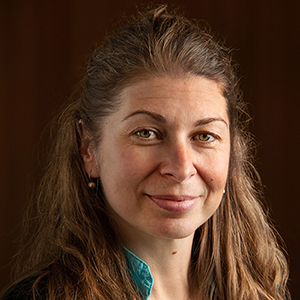
Prof. Irena Knezevic
“They provide resilience when there are shocks. It’s a conversation that’s been going on for years in food systems research, but it was often treated as a bit of a pipe dream. With the pandemic, these issues are starting to become part of the public discourse.”
Knezevic was awarded a grant to study the pandemic’s impact on consumer purchasing habits. She’s working with researchers from Kwantlen Polytechnic University’s Institute for Sustainable Food Systems to collect data from B.C., Alberta, Ontario, Quebec and Atlantic Canada. One survey was conducted over the summer and a follow-up will determine whether the changes consumers made continued.
“We’re looking at how access to food has changed and trying to understand if people are able to discern between industrial food and smaller-scale alternatives,” says Knezevic.
“We want to understand where people are purchasing food and whether they’re supporting smaller producers. We want to know how people are accessing food in practical terms, but also whether a certain set of values is represented in their purchasing habits.”
Viral Defence
There has been plenty of buzz about a possible vaccine for COVID-19, but it is entirely possible that researchers will devise effective treatments before a vaccine is ready.
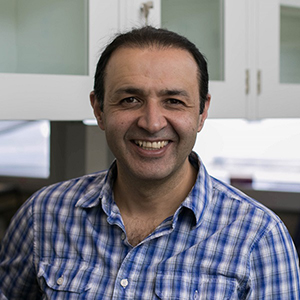
Prof. Ashkan Golshani
Biology professor Ashkan Golshani is developing peptides — chains of amino acids — intended to interfere with the reproduction of SARSCoV-2, the virus that causes COVID-19.
Golshani is working with researchers at the Ottawa Hospital Research Institute and University of California San Francisco to design peptides that bind to a protein tied to the reproduction of the virus. This would prevent the virus from replicating and causing the heavy viral loads that are often present in the most severe forms of COVID-19.
Meanwhile, fellow biology researcher Kyle Biggar and Systems and Computer Engineering professor James Green are also working on peptide treatments. They’re seeking to prevent the virus from interacting with humans.
Green’s lab is using algorithms to model how the virus interacts with its host, while Biggar’s lab will be testing potential treatments identified by the algorithms with the aim of developing peptides that prevent these interactions from occurring at all.
Tuesday, November 24, 2020 in Short Reads - Fall 2020
Share: Twitter, Facebook
